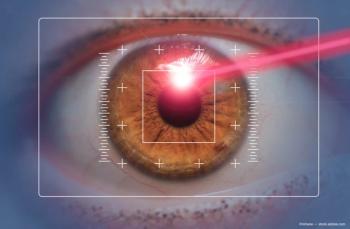
Successful transduction of nonhuman primate trabecular meshworkwith lentiviral vectors reported
Investigators have successfully transferred lentiviral vectors, atype of retroviral vector, into the trabecular meshwork ofcynomolgus monkeys and achieved sustained transgene expression.
Investigators have successfully transferred lentiviral vectors, a type of retroviral vector, into the trabecular meshwork of cynomolgus monkeys and achieved sustained transgene expression.
"Because these vectors integrate permanently into the host genome, they are suitable for chronic diseases such as glaucoma," said Eric Poeschla, MD, of the Mayo Clinic College of Medicine, Rochester, MN.
He and his colleagues conducted a study in which five monkeys received transcorneal anterior chamber bolus injections of vesicular stomatitis virus glycoprotein G-pseudotyped, eGFP-encoding FIV vectors. The virus is not transferred, only the proteins, he explained. Single doses were administered; the doses used were 0.03 × 10-6, 0.3 × 10-7, and 1, and 2 × 10-8 transducing units, according to Dr. Poeschla.
The eyes injected with 1 and 2 × 10-8 transducing units had significant eGFP fluorescence in the trabecular meshwork about 1 month after injection. The 0.03 × 10-6 transducing units did not show fluorescence that was detectable by gonioscopy, and the eyes that received 0.3 × 10-7 transducing units had a low level of fluorescence. There was a mild-to-moderate inflammatory response in the eyes that received the highest dose, but that all but resolved after several weeks.
Interestingly, in the eyes that received the lower doses, in which no fluorescence was detectable by gonioscopy, the gene expression was apparent after the eyes were enucleated. The animals were followed for from 1 month to about 14 months.
"Sustained high-grade eGFP expression can be obtained in the trabecular meshwork of cynomolgus monkeys without raising the IOP and caused only short-term modest inflammatory," Dr. Poeschla said. "The clinical examination discloses only the highest levels of fluorescence and, therefore, underestimates the efficacy of gene transfer. The goal is to develop therapeutic transgenes for glaucoma."
Newsletter
Don’t miss out—get Ophthalmology Times updates on the latest clinical advancements and expert interviews, straight to your inbox.















































.png)


